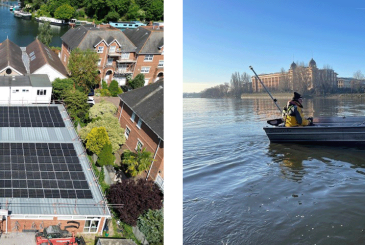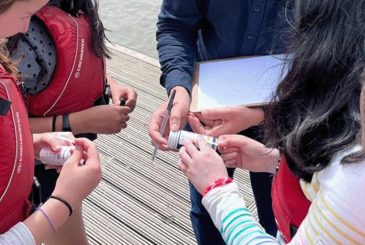If the river’s been in your boathouse, the task of cleaning up can seem daunting. These tips will help clubs get ready to row again safely and quickly.
Tip 1: Check the electrics and gas
Make sure the electrics are thoroughly dried out before turning them on – get this checked by a qualified electrician if any part of your electrical system has been under water.
Similarly, if the club has a gas meter and it’s been under water, get it checked by a qualified gas professional before turning on the boiler.
Tip 2: Check for structural damage
- Check for damage – particularly if your boathouse has wood or plasterboard on the ground floor – in the walls, doors, or in fittings in ground floor dry side facilities such as changing room benches. Make a detailed list of any damage.
- Take photos before you move anything – they will be invaluable if you need to make an insurance claim or for flood-recovery grant applications (see box below).
- Contact the British Rowing Facilities Service if you need support.
- If there is any significant damage, you may need a structural surveyor’s report.
- Ventilate the area as much as possible while it dries out – this can take weeks or even months.
Sport England’s Small Grants Programme accepts applications for financial support from organisations such as rowing clubs that have been impacted by storms and flooding.
Tip 3: Cleanup actions
Once it’s safe to get back in the boathouse, organise working parties to clean it up. As flood waters are often polluted with sewage or oil, make sure everyone involved:
- Wears protective clothing – waterproofs, wellies, face masks and gloves.
- Covers any cuts and wounds.
- Knows not to touch their mouth.
- Washes their hands frequently.
Key cleanup actions:
- Wash boats, blades and anything else that finished up under the flood waters thoroughly with washing up liquid, household fluid cleaning or even disinfectant.
- Take shoes out of boats and wash them separately by immersing them in soapy water and then rinsing them. Stuff them with newspaper and put them somewhere warm to dry.
- Hose down and sweep out the silt left in the boathouse.
- Don’t forget enclosed spaces like spares cupboards!
Tip 4: Document what you’ve learned
While it’s all still fresh in everyone’s mind, update your flood risk assessment and flood preparation action plan with anything you’ve learned from your recent flooding experience.










